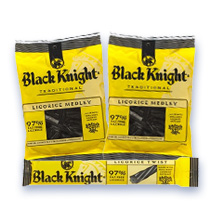Kwabena Nten was in his teens when he dropped out of school to do what he loved best: cocoa farming. Now in his fifties, he has no regrets about choosing this life. His sinewy, tall body bears witness to the years of toil but his youthful looks show it has been no punishment.
He’s in town today to buy provisions for his homestead which has no electricity and no local market or shops. Every so often he breaks off from his story and nods at a passing acquaintance.
He farms on family land in the forest at Senekrom, in the Dormaa-Abenkro district, about 300 miles from the Ghanaian capital Accra. ‘The Senekrom area has good soil for cocoa and other crops,’ says Nten. He built a mud house, the first of what later developed into a hamlet that he named “Kyekyewere” – an Akan-language name meaning “Take heart”.
Most farms have names, some funny, others philosophical. Kyekyewere was the first of four hamlets that Nten established. ‘The fourth one I called “Mmfa hia nnsuro” which means “Don’t let poverty stop you from realizing your dreams”,’ he explains with a telling smile.
No-one seems quite sure how cocoa came to Ghana, but credit for its introduction is generally given to Tetteh Quarshie, a trader who may have brought it from the island of Fernando Po (now Bioko) in 1895. Once rooted in Ghana, the ‘golden pod’ rapidly became the mainstay of the country’s economy. By 1911 Ghana had become the world’s leading producer, exporting about 23,000 tonnes annually, and its output continued to increase until 1965, when it reached a peak of nearly 600,000 tonnes.
But that’s all changed now. In the late 1970s Ghana lost its leading position to Ivory Coast and by 1988 production was down to 278,000 tonnes. Nten has visited a farmer friend in Ivory Coast and, from what he saw, farmers there get a better deal from their government.
Nten is among those who link the decline in Ghana’s production to the lower prices (relative to other crops) the Government has paid cocoa farmers. This began after Independence in 1957 as President Nkrumah tried in vain to steer the country away from its dependency on the colonial cash crop, cocoa, towards self-sufficiency through industrialization. But it has continued due to an overvalued currency, labour shortages and poor roads.
Kwabena Nten has done well despite this. He has about 40 hectares of cocoa and eight full-time workers. Last year he sold around 90 bags to the Cocoa Board; well fermented and dried beans that contribute to Ghana’s reputation for the best cocoa in the world.
Recently, like many other farmers, Nten has diversified into other food crops because he gets paid more for them. He now grows maize, plantains, cocoyam and cassava as well as coffee and oil palm. Recent additions are sugar cane, fish farming and honey bees. They all bring in good money, and he likes the challenge they pose.
Cash-crop diversification is a fairly new practice in Ghanaian peasant families. Until recently, farmers grew cocoa for cash and food for the family. This meant that the income from the sale of the cocoa beans had to last the family the whole year.
‘In those days,’ recalls Nten, ‘Everybody grew food crops so who would buy yours? It’s not like today when even cassava or plantain fetches more than cocoa. At that time the only thing of commercial value was cocoa, since we knew the Government would always buy all we could grow. That’s why we spent all our money and energies on it.’
Why then does he continue with cocoa farming?
‘Simple,’ he replies. ‘Cocoa is agyapadee (legacy). It’s the only thing a farmer can leave his children in the knowledge that there will always be a market for it.
‘Cocoa trees live long, although in the early stages work is very tedious. The young plants need a lot of care. They stretch your resources so tight. You have nothing to your name, and your family is deprived of everything. This period is known as the “wife-desertion stage” – if God doesn’t help you, your wife will leave you because you cannot feed the family. I’ve seen it happen many times,’ he adds, shaking his head.
‘But once the trees mature and start fruiting, the cocoa needs little care between harvests. With food and other crops you need regular maintenance such as weeding – otherwise the yield will be poor.’
Nten’s farming calendar begins with seed nursing in October. He then makes his annual trip to Bawku in northern Ghana to recruit some general labourers. He signs a contract with them under which he undertakes to feed, clothe and house them for a year, to bear any medical expenses, and to pay them 100,000 cedis ($300) at the end. Labourers on other cocoa farms might sign an abusa (‘divide into three’) agreement: when the beans are sold they take one third of the proceeds.
By the time Nten returns from the north, it is land-clearing time. Then comes the rainy season in May or June and the race is on to plant out the seedlings. As soon as this is done the women plant food crops – mostly cocoyams and yams – among the seedlings. These cocoa seedlings will take a long time to mature: at least eight years if they are an old type like Tetteh Quarshie, or three to four years if they are the new hybrid variety.
There’s very little rest from work for Nten, his two wives and the labourers. His day begins about 6.00am when he listens to the radio news. Then he washes and dons his work trousers and shirt – cheap second-hand imports from Europe. For farmers, breakfast is a luxury, but on some mornings when there isn’t too much work to be done they eat ampesie, a dish made from boiled yam, cassava, cocoyam or plantain.
Every farming community has one day when it is taboo to work on the land, when clothes can be washed and visits paid, and on Nten’s farm that is a Friday. Some Sundays Nten also goes to church.
‘But we have to forget about church when there’s work to be done,’ he laughs. ‘When we have rain and we’re transplanting cocoa we’re anxious to get it all done before the rains stop. So going to church is out of the question. That’s when we don’t even waste time washing our hands before we eat, we swallow the dirt with the food, mud and all.’
It’s busy as well during harvesting from September to December.
‘The pods will be a lovely yellow colour showing that they are ready,’ says
Nten. ‘The women take them in baskets to a clearing where we cut them open to extract
the whiteish wet beans that taste sweet on the tongue. Then they are heaped in a mound on
plantain leaves spread on the ground, covered with more leaves and left to ferment for six
days.
 ..............................
..............................

A song of the strong
SUGARBitter, bitter sweet
SOYA BEANSIn summer, dog meat is too yang
Yellow perils
Nestle's
http://www.nestle.co.nz https://secure.win50instantly.com/Chocoholic
 ‘I’m
still a sucker for chocolate,’ writes 13-year-old Ann. ‘Who
could be bored with it? I first remember tasting it when I was about five,
at a friend’s birthday party. His mother had set out a wonderful
array of food – crisps and sweets. In particular there were Smarties:
chocolate drops dressed up in bright colours. That orange Smartie. My
downfall. As I bit through the crackly outside the flavour of the chocolate
began to flood onto my taste buds. Delicious... a wonderful discovery
had been made!’
‘I’m
still a sucker for chocolate,’ writes 13-year-old Ann. ‘Who
could be bored with it? I first remember tasting it when I was about five,
at a friend’s birthday party. His mother had set out a wonderful
array of food – crisps and sweets. In particular there were Smarties:
chocolate drops dressed up in bright colours. That orange Smartie. My
downfall. As I bit through the crackly outside the flavour of the chocolate
began to flood onto my taste buds. Delicious... a wonderful discovery
had been made!’
This teenager’s enthusiasm has been shared down the centuries and across the continents – chocolate has a history linked by intrigue, love and money.
For 2,000 years the cacao (cocoa) plant has been cultivated in Central America. The Aztecs believed that the beans were divine food, fit for their bird-god Quetzalcoatl – a notion that Swedish naturalist Linnaeus perpetuated in the plant’s classificatory name: ‘theobroma’ (Greek for god and food).
The beans had a secular value too. They were the unit of currency in the region. Descendants of the Aztecs paid taxes in beans until the 1880s, while three centuries or so earlier at least 10 beans were required to secure the sexual services of a prostitute in Nicaragua.
Consorting and chocolate have an intertwined history. The seventeenth-century chocolate houses of Europe provided a respectable public place in which upper-class women and men could meet without impropriety. Casanova, who built up a reputation as a stud, is believed to have preferred chocolate to champagne as the spur to his amorous antics.
Maybe he found that the drink’s caffeine-like chemical theobromine gave him the necessary lift. Or it could be that he experienced the effects of phenylethylmine – cocoa’s analogue of a chemical which occurs naturally in humans and induces euphoria. This could explain why love-sick people seem to crave chocolate, for the level of this amphetamine-like chemical drops when you are depressed.
Perhaps this also explains a bit of seventeenth-century gossip. A lady of the French court, the Marquise de Coëtlogen gave birth to a black baby. Wags suggested that this was because she had eaten so much chocolate during her pregnancy. But perhaps she was love-sick.
